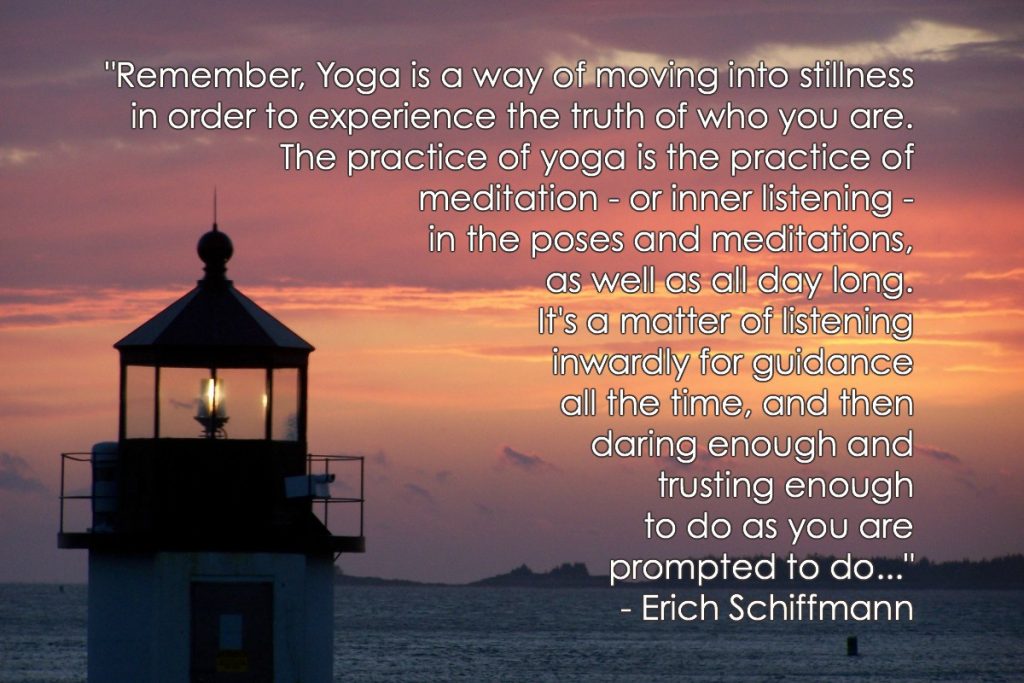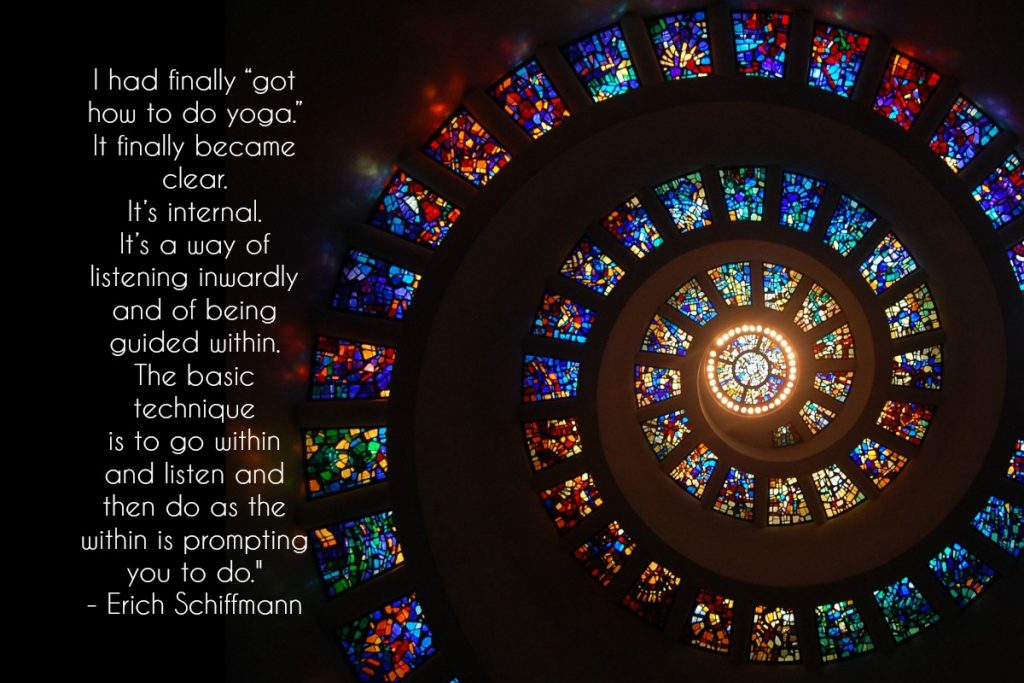This is the second half of my review of Erich Schiffmann’s Freedom Yoga Immersion. As inspiring as this online course was I did see a few red flags along the way. To be honest, I almost stopped watching at Day 4. But I pushed through and remembered to use what works and leave the rest. Here’s what I left behind and what I’ll take into the future…
#1: Watching Television. At one point a student asked if it was possible to practice “being online” while watching television. Schiffmann said yes, but I do not recommend watching television.
#2: The All One/One Love lectures had a heavy New Age-propaganda spin to them. I detected elements of “idiot compassion” (a phrase coined by Chogyam Trungpa) and the psychological warfare tactics described by KGB defector Yuri Bezmenov.
#3: The Milarepa Necklace. Schiffmann was seemingly unaware of the implications of wearing an image of this Tibetan yogi and sorcerer. This is not to be taken lightly. Not from anyone, not even an eccentric long-haired hippy.
#4: Food/Vegetarianism. I do not recommend attempting to replace food with love. Love is an emotion. You have to eat to survive. What you choose to eat has a direct impact on your physical and mental health.
#5: Free Will. Schiffmann believes that the best use of free will is to not use it. When it comes to spiritual practices it’s very easy to get lost in the “follow the leader” mentality. Handing over your free will to whatever you believe might be your intuitive connection to the Divine… well, that requires a high level of discernment, training and self-cultivation.
The Slow Path is Best
Learning how to engage with your intuition takes time. Traditionally, a guru and an aspirant would test one another over ten years before entering into a formal student-teacher relationship. I would suggest taking this same approach with your intuition. We’re talking about unraveling a lifetime of habituated thought patterns in order to understand who you are. And that’s just the beginning!
By all means, connect with your intuition through your body. Practice letting go in savasana (a preparation for dying). Get comfortable with feeling open, expansive and unguarded. Practice listening to your inner guidance in this relaxed state. Ask for guidance that is in alignment with your highest good. Connect with your desire to know.
Something’s going on here, … ,
Little Dharma Sessions
Coming back to what worked. I’m so grateful to have been able to take this training for free. The two parts that were most helpful were Schiffmann’s encouragement to:
- Write more. I so appreciated the recommendation to jot down my on-the-mat inspirations, and to continue writing articles. He called these practices “good little dharma sessions.”
- Do my yoga with people. This idea challenges and inspires me so much that I’m thinking about offering a class that includes a free-form practice component. To explore my own take on Freedom Yoga.
I highly recommend this course to anyone who is interested in developing their own yoga practice.



